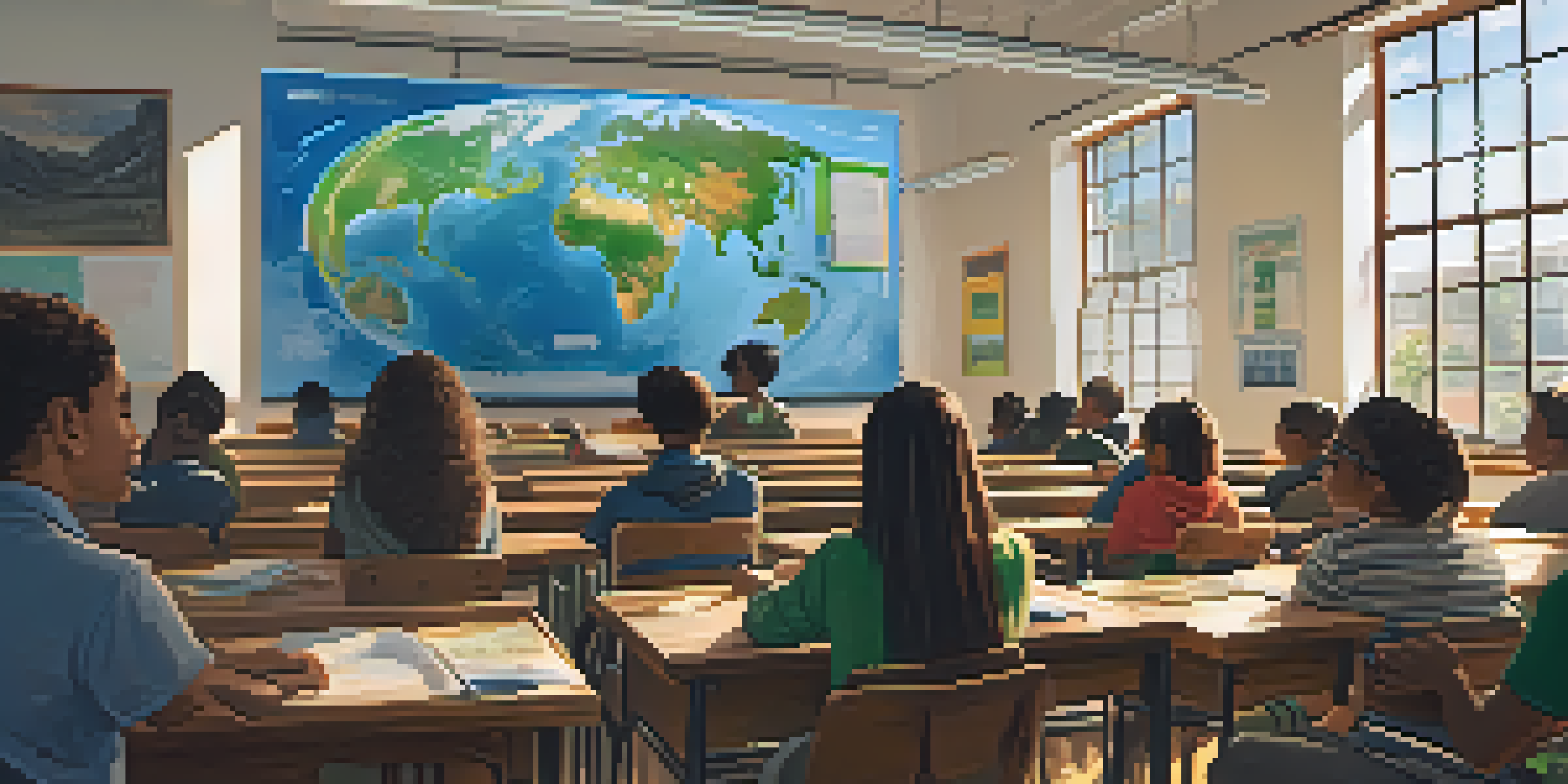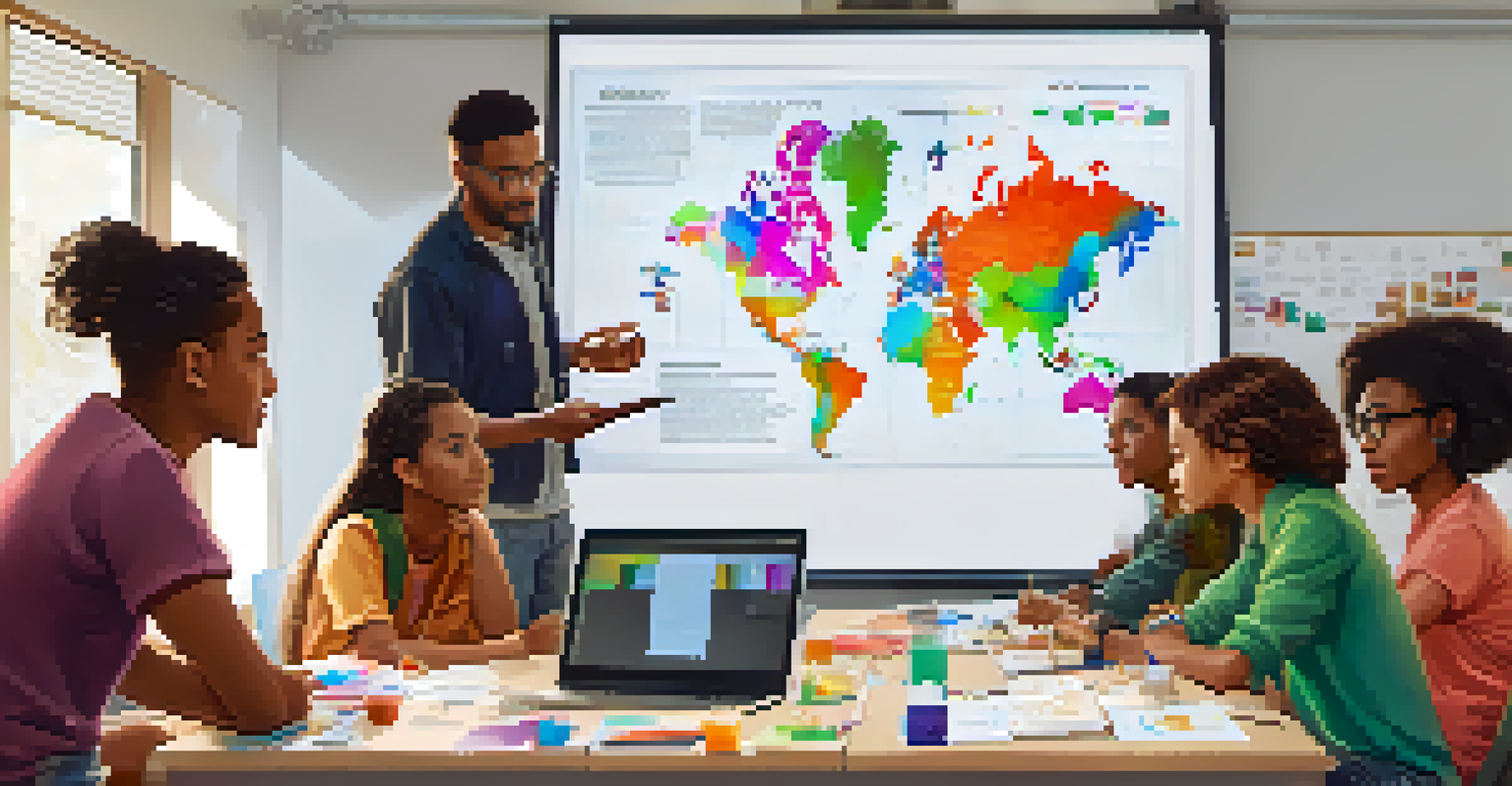Using Documentaries as a Teaching Tool in Modern Education

The Rise of Documentaries in Educational Settings
In recent years, documentaries have gained traction as a valuable teaching tool. Their engaging storytelling captures students' attention, making complex subjects more relatable. Teachers are increasingly incorporating documentaries into their lesson plans to enrich traditional learning methods.
Documentaries can inspire audiences to think critically and question the world around them.
Unlike textbooks, documentaries offer visual and auditory stimulation, which can cater to various learning styles. This multi-sensory approach helps students retain information better, as they can see real-world applications of the concepts being taught. It also sparks curiosity, encouraging students to ask questions and explore further.
Furthermore, with platforms like Netflix and YouTube, accessing high-quality documentaries has never been easier. This accessibility empowers educators to curate content that aligns with their curriculum, promoting a more interactive and immersive learning experience.
Enhancing Critical Thinking Through Documentaries
Documentaries often present multiple perspectives on a topic, fostering critical thinking among students. When students engage with different viewpoints, they learn to analyze information critically rather than accepting it at face value. This skill is essential in today's world, where misinformation is rampant.

For example, a documentary about climate change can showcase scientific data while also highlighting personal stories from affected communities. This dual approach encourages students to consider the ethical implications and societal impacts of environmental issues. By discussing these elements, they become more adept at forming their own informed opinions.
Documentaries Enhance Learning Styles
The engaging nature of documentaries caters to various learning styles, making complex subjects more relatable and memorable.
Moreover, documentaries can serve as a springboard for classroom discussions and debates. Teachers can assign follow-up activities that challenge students to defend their viewpoints, providing a platform for constructive dialogue and deeper understanding of the subject matter.
Fostering Empathy and Global Awareness
One of the most powerful aspects of documentaries is their ability to evoke empathy. By showcasing real-life stories, documentaries help students connect emotionally with people and cultures different from their own. This emotional connection can cultivate a sense of global citizenship and responsibility.
The best education is not only about the facts but also about understanding the world and our place in it.
For instance, a documentary about refugees can humanize the statistics by sharing individual experiences. Students can see the challenges faced by these individuals, promoting a deeper understanding of global issues. This fosters compassion and encourages them to think about how they can contribute positively.
Additionally, learning about diverse cultures and perspectives through documentaries can broaden students' worldviews. This exposure is crucial in our interconnected world, as it prepares students to navigate and appreciate multicultural environments in their future careers.
Promoting Collaboration and Teamwork
Using documentaries in the classroom can also enhance collaboration among students. Group projects centered around documentary themes encourage students to work together, share insights, and learn from each other. This collaborative approach mirrors real-world scenarios where teamwork is essential.
For example, after watching a documentary, students can be divided into groups to research related topics or create presentations. This not only reinforces the material but also allows them to practice communication and problem-solving skills. These are invaluable skills that will serve them well in their future endeavors.
Fostering Critical Thinking Skills
By presenting multiple perspectives, documentaries encourage students to analyze information critically and form informed opinions.
Furthermore, collaboration can lead to diverse interpretations and discussions, enriching the learning experience. By working together, students learn to respect differing opinions, enhancing their social and emotional skills.
Incorporating Technology and Multimedia Elements
The integration of technology in education has opened new avenues for using documentaries as teaching tools. Interactive features, such as quizzes and discussion forums, can be embedded alongside documentary content to enhance engagement. This makes learning more dynamic and tailored to students' needs.
For example, educators can use platforms like Edpuzzle to create interactive lessons where students answer questions while watching a documentary. This ensures that they are actively engaged with the material and helps reinforce key concepts. It also allows teachers to gauge student understanding in real-time.
Moreover, the use of multimedia elements, such as infographics and supplementary videos, can provide additional context and depth to the documentary's subject matter. This layered approach caters to various learning styles and keeps students interested.
Evaluating the Impact of Documentaries in Education
To truly understand the effectiveness of documentaries in education, evaluation is crucial. Educators should assess how well students grasp the material and engage with it on deeper levels. Tools like surveys and reflective essays can provide insights into the impact of documentaries on students' learning experiences.
For instance, after a documentary screening, teachers can ask students to write about their key takeaways and how their perspectives may have shifted. This not only encourages critical reflection but also helps educators refine their teaching strategies based on student feedback.
Promoting Empathy and Global Awareness
Documentaries evoke empathy through real-life stories, helping students connect with diverse cultures and global issues.
Additionally, tracking academic performance before and after incorporating documentaries can help illustrate their effects on learning outcomes. This data-driven approach can strengthen the case for using documentaries as a staple in modern educational practices.
Challenges and Considerations in Using Documentaries
While documentaries offer numerous benefits, there are challenges educators must navigate. One primary concern is ensuring that the content is age-appropriate and aligns with curriculum standards. Teachers must carefully select documentaries that are not only informative but also suitable for their students’ maturity levels.
Moreover, educators should be mindful of potential biases in documentary filmmaking. It's essential to choose documentaries that present a balanced view and not just one side of a story. This encourages students to think critically and form their own opinions based on a well-rounded understanding.

Lastly, teachers need to consider the logistics of screening documentaries, such as time constraints and access to technology. Planning ahead can help mitigate these challenges, ensuring that the integration of documentaries into the curriculum is as seamless as possible.